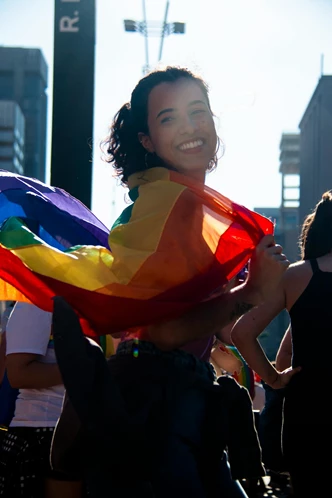 Next up on our ASWB exam content outline tour: The influence of sexual orientation on behaviors, attitudes, and identity. Let's read up and then try out a practice question.
Next up on our ASWB exam content outline tour: The influence of sexual orientation on behaviors, attitudes, and identity. Let's read up and then try out a practice question.
Sexual orientation can influence behaviors, attitudes, and identity, shaping individual experiences, interpersonal relationships, and societal interactions. These influences vary widely depending on factors such as social context, cultural norms, and personal circumstances. Below is a quick survey:
Influence on Behaviors
Influence on Attitudes
-
Toward Self:
- Internalized societal messages can lead to self-acceptance or internalized homophobia, influencing self-esteem and overall mental health.
- Positive affirmation and acceptance of one’s sexual orientation can foster resilience, confidence, and a sense of authenticity.
-
Personal Identity:
- Sexual orientation is a core aspect of personal identity, influencing how individuals perceive themselves and their place in the world.
- Coming out and self-disclosure processes are pivotal moments in identity formation, often accompanied by feelings of liberation or vulnerability.
-
Intersectionality:
- Sexual orientation intersects with other identity factors such as race, gender, religion, and socioeconomic status, creating unique lived experiences.
- For example, LGBTQ+ individuals of color may face compounded discrimination based on both sexual orientation and racial identity.
-
Community Identity:
- Many LGBTQ+ individuals find a sense of belonging and identity within LGBTQ+ communities, which often serve as spaces for support, solidarity, and celebration.
- Participation in these communities can reinforce positive identity formation and provide a buffer against societal rejection.
Contextual and Environmental Factors
Psychological and Emotional Impacts
-
Minority Stress:
- LGBTQ+ individuals often experience stress due to discrimination, stigma, or lack of societal acceptance, affecting mental health and well-being.
- Resilience strategies, such as building support networks or seeking therapy, are common responses to these stressors.
-
Mental Health:
- Positive affirmation of sexual orientation is associated with better mental health outcomes, while rejection or concealment correlates with higher rates of anxiety, depression, and suicide risk.
- Youth navigating their sexual orientation are particularly vulnerable to bullying and mental health challenges, emphasizing the importance of supportive environments.
Social and Political Implications
Key Takeaways
- Sexual orientation is a central aspect of identity, shaping behaviors, attitudes, and personal experiences.
- Societal acceptance and representation are critical in fostering positive attitudes and identity development.
- Addressing stigma, providing support, and advocating for inclusivity are essential to reducing disparities and promoting well-being among LGBTQ+ individuals.
On the Exam
Here's a sample question based on this topic:
A social worker is facilitating a support group for LGBTQ+ youth. One group member shares they are afraid to express their sexual orientation at school due to fear of bullying. Which intervention is MOST appropriate to address this concern?
A. Connect the youth with resources to advocate for school-wide LGBTQ+ inclusivity policies.
B. Encourage the youth to confront their fears by openly sharing their orientation at school.
C. Work with the youth to identify trusted individuals or allies within the school for support.
D. Recommend the youth focus on academic success and avoid disclosing their orientation until adulthood.
What's your answer?
Identifying allies provides the youth with immediate emotional support and creates a safer environment without requiring public disclosure. C is the correct answer.
Why not A? Advocacy for systemic change is important but may not address the immediate fear and safety concerns of the individual. Why not B? Encouraging the youth to disclose their orientation without addressing their fears could increase vulnerability to bullying. Why not D? Advising the youth to delay disclosure reinforces a message of fear and avoidance, rather than empowering them to navigate their current environment.
Get lots more practice questions on Social Work Test Prep's full-length exams.

 Next up on our ASWB exam content outline tour: The influence of sexual orientation on behaviors, attitudes, and identity. Let's read up and then try out a practice question.
Next up on our ASWB exam content outline tour: The influence of sexual orientation on behaviors, attitudes, and identity. Let's read up and then try out a practice question.